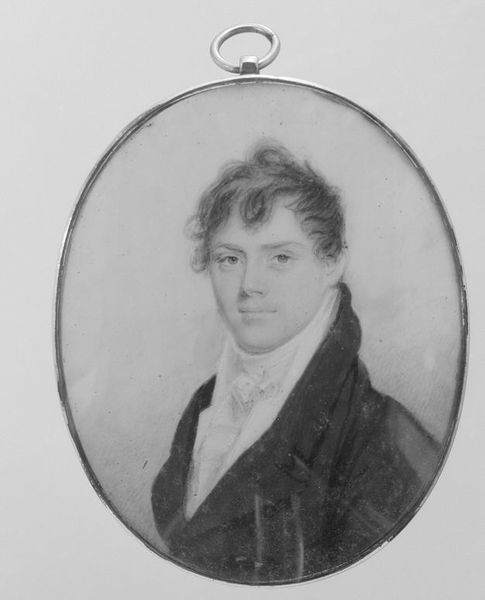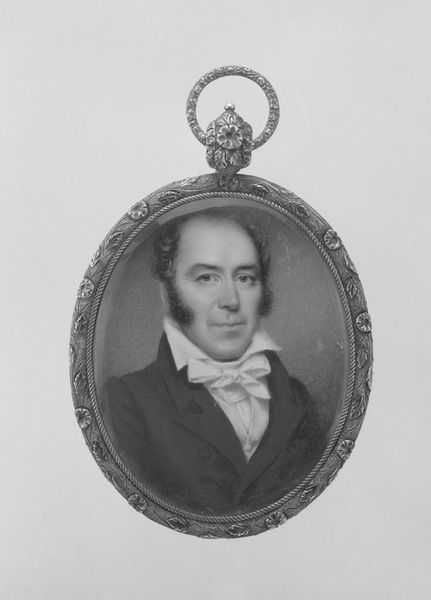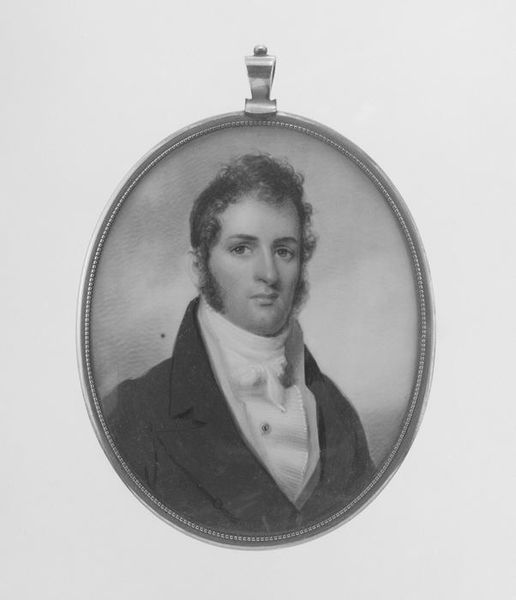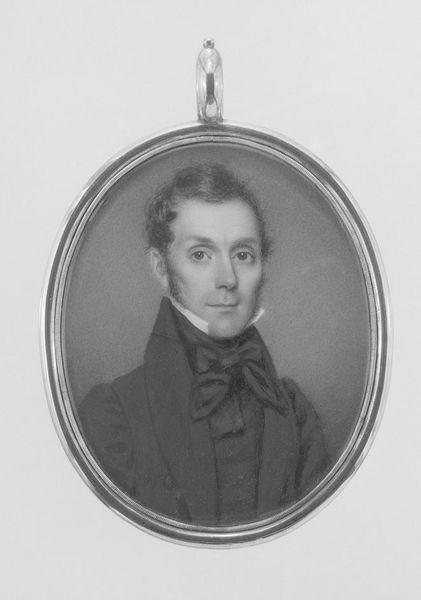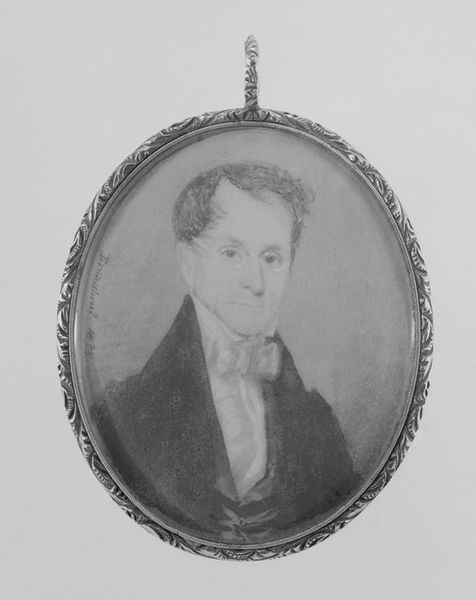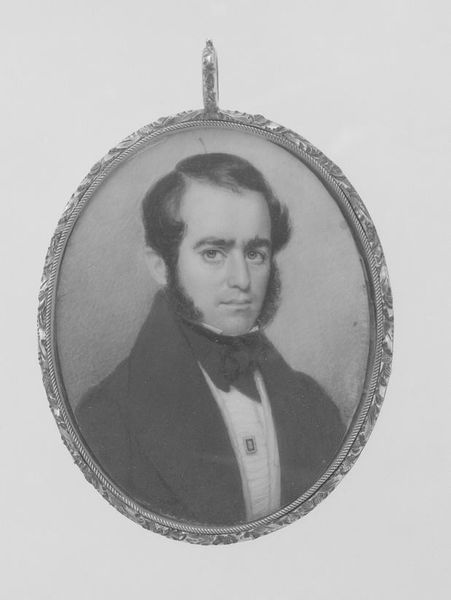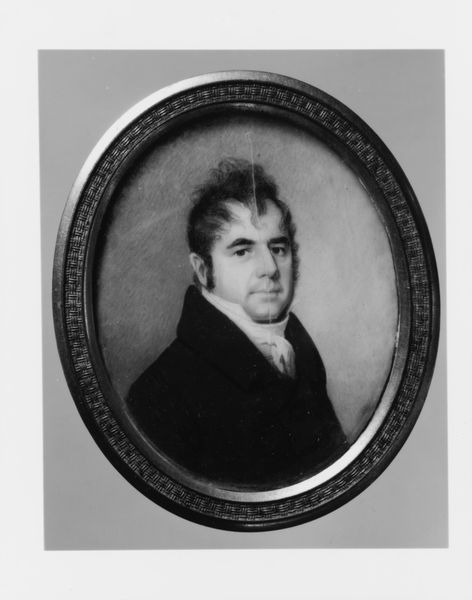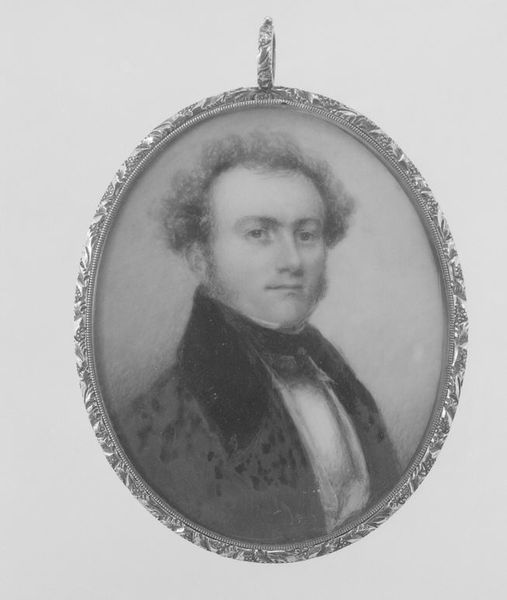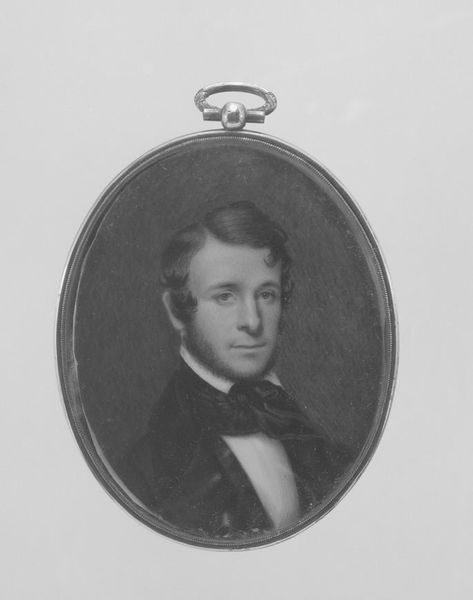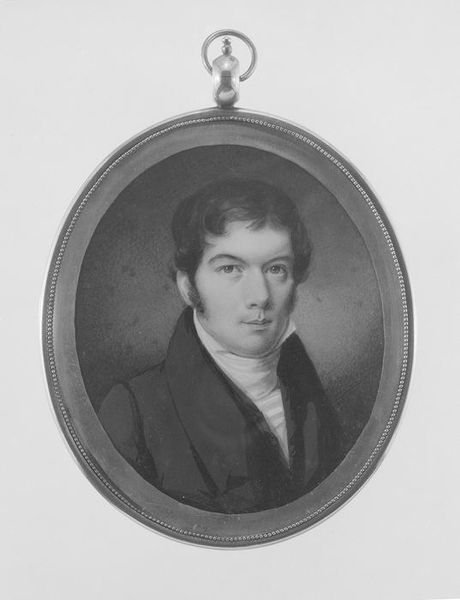
painting
#
portrait
#
painting
#
romanticism
#
academic-art
#
miniature
Dimensions: 2 17/32 x 2 1/16 in. (6.4 x 5.2 cm)
Copyright: Public Domain
Editor: This is a rather charming miniature painting of "John Cox," created sometime between 1807 and 1810, currently housed at the Metropolitan Museum of Art. Something about the way he's looking makes him seem melancholy. What catches your eye when you look at this portrait? Curator: Well, firstly, it’s not just a portrait; it’s practically a whisper from another era. Can't you almost feel the gentle pulse of Romanticism in those soft brushstrokes? There's this wistful expression, certainly. The artist really captured a sense of inner reflection, wouldn't you say? What does *he* seem to be thinking about? Editor: Perhaps love or loss, if I were to indulge in pure conjecture? What about the artist, do you think they knew him? Curator: Maybe! Think about it – painting a miniature, such an intimate act! It makes me imagine a quiet, focused connection, with long pauses filled with mutual understanding. Now, look at the lighting – notice how it almost sculpts his face? A face trying, maybe, to hide a secret, or a deep vulnerability. Editor: It definitely emphasizes his cheekbones. And the detail around his ruffled shirt is wonderful. I can almost feel the texture! It's intriguing how they captured so much in such a tiny format. Curator: Absolutely. This small token packs quite a punch, wouldn’t you agree? The Romantic period favored emotion, and you can certainly detect the mood of a person caught between public expectation and internal musing. And what remains unspoken always resonates. It invites *us* to ponder what lies beneath. Editor: So, even seemingly simple portraits can offer incredibly nuanced narratives if we spend the time looking. Curator: Precisely. Sometimes, the smaller the piece, the bigger the story.
Comments
No comments
Be the first to comment and join the conversation on the ultimate creative platform.
